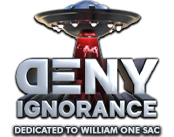
14 |
78 |
| JOINED: |
May 2024 |
| STATUS: |
OFFLINE
|
| POINTS: |
870 |
https://newatlas.com/biology/life-merger...organelle/
Quote:Scientists have caught a once-in-a-billion-years evolutionary event in progress, as two lifeforms have merged into one organism that boasts abilities its peers would envy. Last time this happened, Earth got plants.
A species of algae called Braarudosphaera bigelowii was found to have engulfed a cyanobacterium that lets them do something that algae, and plants in general, can’t normally do – "fixing" nitrogen straight from the air, and combining it with other elements to create more useful compounds.
The phenomenon is known as primary endosymbiosis and it happens when a microbial organism engulfs another one providing it with energy, nutrients, protection, and in return it gains a function or functions that it didn't previously have. This is the leading evolutionary theory on how eukaryotic cells have come to exist from prokaryotes.
The first time primary endosymbiosis happened around 2.2 billion years ago it resulted in the creation of mitochondria, the power source of a cell. An archaea (procaryotic cell) permanently enslaved a purple non-suphur bacterium from the class of alpha-protobacteria becoming an integral part (organelle) of the cell.
The second time this happened around 1.6 billion years ago one of these evolved cells captured a photosynthetic bacterium known as cyanobacterium which later became what we now know as a chloroplast, an organelle that plant cells have. Very important for the process of photosynthesis as it happens in chloroplasts.
From the two very rare but extremely important mergers we had the creation of all complex life forms and from the second one the creation of plants.
https://www.ncbi.nlm.nih.gov/pmc/articles/PMC1634775/

6 |
145 |
| JOINED: |
Apr 2024 |
| STATUS: |
OFFLINE
|
| POINTS: |
955 |

05-06-2024, 08:16 PM
This post was last modified 05-06-2024, 08:55 PM by Creaky. Edited 2 times in total.
This was already posted, some days ago or maybe that was ats?
Anyway, two lifeforms become 1, so 1 lifeform dies, is killed?
So many questions arise from your statement
Makes me wonder if they are alive, how do two living things become one living thing
Becomes an organ for the host?
so two things replicate as a single?
So many questions
So one form dies and from then on, all new forms have this new life form automatically, living singular or as two?
Something about it doesn’t add up,
So easy to just say a few words, “look here”, but no in depth analysis

31 |
554 |
| JOINED: |
Nov 2023 |
| STATUS: |
OFFLINE
|
| POINTS: |
4,305 |

While interesting, I have to point out that was a lab created situation. Not to mention where the news came from: Origin of mitochondria by intracellular enslavement of a photosynthetic purple bacterium - PMC (nih.gov) The National Center for Biotechnology Information, those same people that "did not fund" gain of function research, seem to be at it again. I worry about where this new research will lead, another global lockdown, more vaccines for people to "voluntarily-take", or some kind of 21st century Great Mortality? WHO knows, but they aren't saying a thing.

14 |
78 |
| JOINED: |
May 2024 |
| STATUS: |
OFFLINE
|
| POINTS: |
870 |
05-09-2024, 07:09 PM
This post was last modified 05-09-2024, 07:16 PM by K218b. Edited 1 time in total.
(05-06-2024, 08:16 PM)Creaky Wrote: [Video: https://youtu.be/kSavmBlniOI?si=1XGjLSyXKBiHX0eU]This was already posted, some days ago or maybe that was ats?
Anyway, two lifeforms become 1, so 1 lifeform dies, is killed?
So many questions arise from your statement
Makes me wonder if they are alive, how do two living things become one living thing
Becomes an organ for the host?
so two things replicate as a single?
So many questions
So one form dies and from then on, all new forms have this new life form automatically, living singular or as two?
Something about it doesn’t add up,
So easy to just say a few words, “look here”, but no in depth analysis
Thanks for your reply, first of all.
None of the two microbial organisms die but they live in harmony and that's why the name given to this process is called primary endosymbiosis.
Take a look at the two examples I gave you. We know they happened long time ago but they are responsible for the creation of complex life and the creation of plants.
When an archaea engulfed a bacterium around 2.2 billion years ago it resulted in endosymbiosis and the bacterium became what we know now as a mitochondrion. This is the power source of the cell. In the second case an advanced cell containing mitochondria engulfed a cyanobacterium capable of photosynthesis, now known as a chloroplast.
It's very clear what has happened in the past and we have observed the same process very recently even though it's a rare event.
(05-06-2024, 08:42 PM)guyfriday Wrote: While interesting, I have to point out that was a lab created situation. Not to mention where the news came from: Origin of mitochondria by intracellular enslavement of a photosynthetic purple bacterium - PMC (nih.gov) The National Center for Biotechnology Information, those same people that "did not fund" gain of function research, seem to be at it again. I worry about where this new research will lead, another global lockdown, more vaccines for people to "voluntarily-take", or some kind of 21st century Great Mortality? WHO knows, but they aren't saying a thing.
This process is natural and not a result of an experiment in a lab
The link at the bottom is for information on how mitochondria came into existence
The title is this:
"Origin of mitochondria by intracellular enslavement of a photosynthetic purple bacterium"

14 |
78 |
| JOINED: |
May 2024 |
| STATUS: |
OFFLINE
|
| POINTS: |
870 |
Anyone who wants to have a look at this phenomenon, you can type: primary endosymbiosis

14 |
78 |
| JOINED: |
May 2024 |
| STATUS: |
OFFLINE
|
| POINTS: |
870 |
https://royalsocietypublishing.org/doi/1....2014.0330
Quote:For over 100 years, endosymbiotic theories have figured in thoughts about the differences between prokaryotic and eukaryotic cells. More than 20 different versions of endosymbiotic theory have been presented in the literature to explain the origin of eukaryotes and their mitochondria. Very few of those models account for eukaryotic anaerobes. The role of energy and the energetic constraints that prokaryotic cell organization placed on evolutionary innovation in cell history has recently come to bear on endosymbiotic theory. Only cells that possessed mitochondria had the bioenergetic means to attain eukaryotic cell complexity, which is why there are no true intermediates in the prokaryote-to-eukaryote transition. Current versions of endosymbiotic theory have it that the host was an archaeon (an archaebacterium), not a eukaryote. Hence the evolutionary history and biology of archaea increasingly comes to bear on eukaryotic origins, more than ever before. Here, we have compiled a survey of endosymbiotic theories for the origin of eukaryotes and mitochondria, and for the origin of the eukaryotic nucleus, summarizing the essentials of each and contrasting some of their predictions to the observations. A new aspect of endosymbiosis in eukaryote evolution comes into focus from these considerations: the host for the origin of plastids was a facultative anaerobe
|












